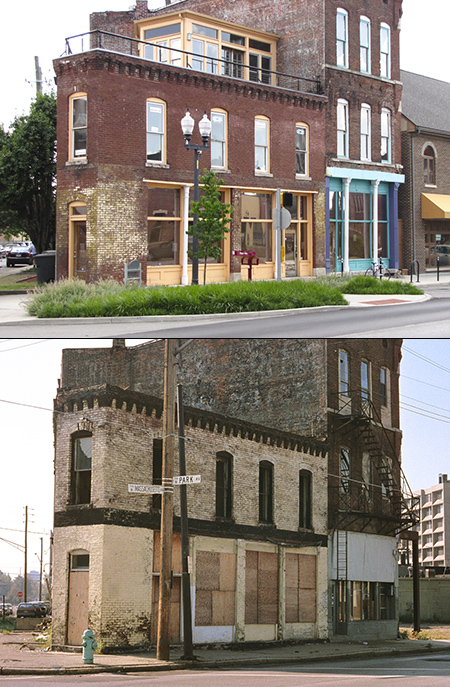Subscriber Benefit
As a subscriber you can listen to articles at work, in the car, or while you work out. Subscribe Now Picture a vibrant urban neighborhood in Indiana and you are likely seeing the results of the federal Historic Tax Credit, a 20 percent credit on qualified rehabilitation expenses on income-producing buildings (not owner-occupied residences) listed in the National Register of Historic Places.
Picture a vibrant urban neighborhood in Indiana and you are likely seeing the results of the federal Historic Tax Credit, a 20 percent credit on qualified rehabilitation expenses on income-producing buildings (not owner-occupied residences) listed in the National Register of Historic Places.
Created in 1976, the HTC sends federal tax dollars back to local communities, creating jobs while revitalizing neighborhoods. The Reagan administration expanded the program in 1981 and, seeing its success, Congress made it a permanent part of the tax code in 1986. Since then, the HTC has leveraged more than $130 billion in private investment to rehabilitate 42,000 buildings, creating 2.5 million jobs, growing local economies, and creating stability in urban areas and rural communities, all while returning an average of $1.20 for every $1 of federal funds invested. The program was tied to more than $746 million in investment in Indiana from 2001 to 2015.
Indianapolis’ Mass Ave neighborhood is a case in point. The Mass Ave of 1980 was lined by derelict buildings with boarded-up storefronts; newspaper articles from that period frequently use terms like “skid row” and “flophouse” to describe the area. The HTC was key to financing major rehabilitation projects in the neighborhood over the last 35-plus years, creating hundreds of housing units and one of the strongest small-business corridors in the state.
The 1986 redevelopment of an abandoned Sears store off Massachusetts Avenue included the opening of Indianapolis’ first new downtown grocery store—O’Malia’s/Marsh/Needler’s—a success that many of Indy’s peer cities struggled to duplicate for more than 20 years.
Major projects using the HTC helped the neighborhood reach a critical mass of residents and business activity, inspiring reinvestment in surrounding properties while making new infill construction viable. Those derelict buildings lining Massachusetts Avenue of 1980 proved to be the greatest asset in its revitalization: Not only do they contribute to its unique sense of place, they were the key to its dramatic transformation.
The HTC’s success is not limited to downtown Indianapolis: It has been an essential part of urban revitalization in cities like Evansville, Fort Wayne, Lafayette, Bloomington and Muncie, as well as in smaller communities like Wabash and Vincennes. I recently heard a professor of sociology from Hanover College cite a bustling coffee shop in the center of downtown Madison as a perfect example of the kind of place that creates and strengthens community. That coffee shop opened in 2004 as part of an HTC-funded rehabilitation of a vacant building.
The HTC has enjoyed bipartisan support for more than 30 years, with a remarkable track record of economic growth, job creation and community revitalization, delivering widespread benefit while more than covering its costs. Compared with new construction, rehabilitation projects spend a larger percentage of costs on skilled labor, tend to keep wages and materials dollars within the community, and result in renovated buildings that tend to last longer and retain value longer than comparable new construction. Current proposals for tax reform would eliminate or greatly reduce the HTC. Now is the time to contact your elected officials to remind them of this program’s value to Hoosiers.•
__________
Benjamin L. Ross is a historic preservation specialist with Ratio Architects Inc.
Please enable JavaScript to view this content.

